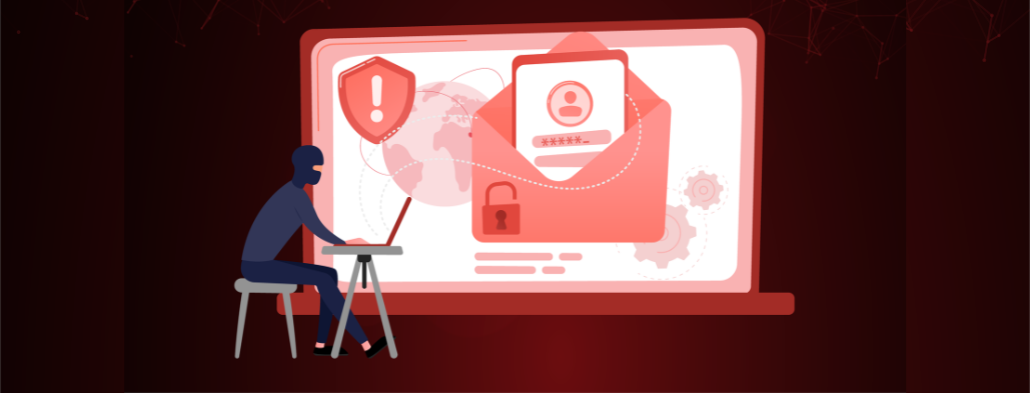Yes, eavesdropping attacks are not exclusive to large enterprises. Small businesses are equally susceptible, especially if they handle sensitive information or engage in industries prone to corporate espionage.
Eavesdropping attacks are looming large over businesses these days, getting hold of their confidential information and threatening their integrity. Understanding the nuances of these covert threats is paramount to safeguarding sensitive information and maintaining business confidentiality.
This article explains eavesdropping attacks, their methods, real-world examples, and ways to protect your business information from catastrophic harm.
An eavesdropping attack is a covert and unauthorized interception of communication between two parties. The eavesdropper gains unauthorized access to sensitive information, such as passwords, financial details, or trade secrets, without the knowledge or consent of the communicating parties.
In simpler terms, it involves a third party secretly listening in on conversations or monitoring digital communication channels to access confidential data without the knowledge or consent of the communicating parties.
Eavesdropping attacks can occur through wiretapping or digital methods. These attacks pose a significant threat to private and secure information.
Eavesdropping attacks exploit vulnerabilities in communication channels. Attackers may employ various techniques to intercept data, ranging from passive monitoring to actively inserting themselves into the communication stream. The primary goal is to clandestinely gather personal information without arousing suspicion.
Hackers might use unsecured public Wi-Fi networks, tap into data lines, or exploit software vulnerabilities to listen in.
The most immediate impact of an eavesdropping attack is the compromise of confidentiality. Once someone exposes sensitive business information, malicious individuals can exploit it for financial losses or reputational damage.
Eavesdropping on sensitive business communications can result in severe legal consequences. Violations of privacy laws and data protection regulations may lead to hefty fines and damage the organization's standing in the business landscape.
Customers, partners, and stakeholders enormously trust businesses to safeguard their information. An eavesdropping incident can shatter this trust, potentially driving away clients and damaging long-term relationships.
Protecting your business from eavesdropping attacks requires a comprehensive approach that addresses technical vulnerabilities and human factors.
End-to-end encryption ensures the data remains indecipherable to unauthorized parties even if intercepted. Use secure communication tools or gateways like RMail's AI-infused eavesdropping detection service to alert your users or IT admins before a crime even happens.
Utilize robust network monitoring tools and intrusion detection systems to identify abnormal patterns or suspicious activities. Proactive monitoring allows for early detection and swift response to potential eavesdropping attempts.
Most eavesdropping attacks stem from email channels, so it's of utmost priority for any business to choose a tool that not only prevents but also actively hunts for cyber threats and pre-empts them.
Human error remains a significant factor in eavesdropping attacks. Organizations must educate employees about the risks, teach secure communication practices, and instill a culture of vigilance to thwart social engineering attempts.
Limit access to sensitive information on a need-to-know basis. Implementing strict access controls reduces the likelihood of insider threats and ensures that only authorized personnel can access critical business data.
It also means one must know how to protect confidential information in email threads if a cybercriminal hijacks the email conversations or Cc and Bcc recipients accidentally exposing sensitive data by responding to an email to all recipients with information only meant for the sender.
Conduct regular security audits to identify and rectify potential vulnerabilities in communication channels. Or implement robust email security tools like RMail that provide proof of emails with attachments opened and delivered complete with audit trails that help you stay vigilant on all digital communications.
Yes, eavesdropping attacks are not exclusive to large enterprises. Small businesses are equally susceptible, especially if they handle sensitive information or engage in industries prone to corporate espionage.
While encryption is crucial, a holistic approach involving secure communication practices, employee training, and network monitoring is necessary for comprehensive protection.
Recovery involves a combination of legal actions, rebuilding trust with stakeholders, and implementing enhanced security measures. Transparent communication about the incident is crucial to regaining credibility.

Man-in-the-Middle Attack | Email Security

Targeted Attack Pre-Emption™ | Email Security

Security Operations Center | Email Security